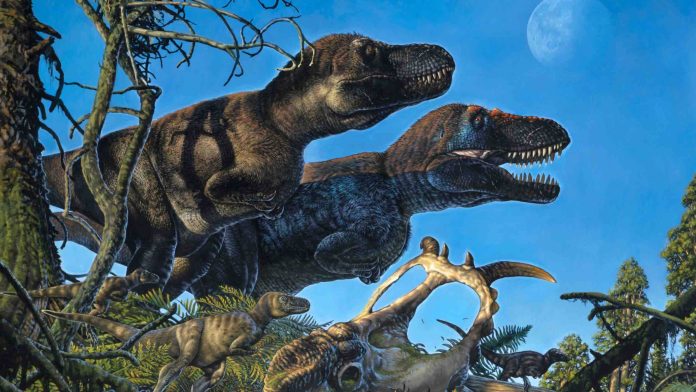No very large dinosaurs have ever been unearthed in the tropical regions of the Earth. Only a few species of small meat-eating dinosaurs have been found in the tropics to date. Geochemist Jessica Whiteside from the University of Southampton and colleagues from the United States have found an explanation for the absence of large dinosaurs in the tropics.
The researchers based their hypothesis on a study of fossils dating from as early as 200 million years ago from the Ghost Ranch in northern New Mexico. During the time dinosaurs roamed the Earth, the area around the Ghost Ranch was located in the tropics at about the same latitude as India is at present. The researchers examined the plant and animal life in the region in a layer-by-layer analysis.
The dinosaur population in the tropics accounted for only 15 percent of all vertebrate animal remains examined by the scientists. The dinosaur population consisted in majority of small, carnivorous theropods. Reptiles abounded compared to dinosaurs. No very large dinosaur remains could be found. Reptiles found refuge from the heat in rivers and underground.
The researchers propose that large dinosaurs avoided the tropics because of temperature and the lack of sufficient plant life to sustain the gigantic sizes some plant-eating dinosaurs attained elsewhere in the world at the same time. Carbon dioxide levels that were six times higher than present levels of carbon dioxide were attributed to continual fires in the tropics. Fire and very infrequent rain produced a climate that could not support large dinosaurs because plants were not abundant.






























